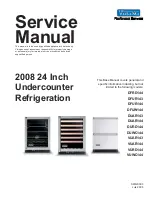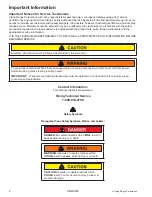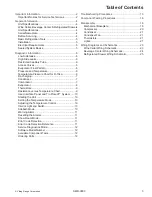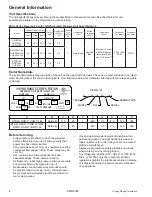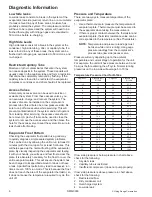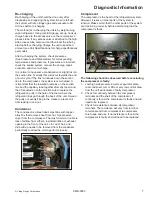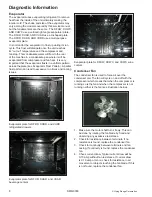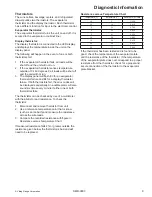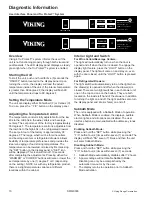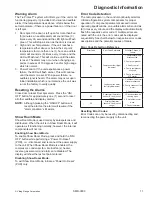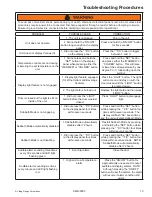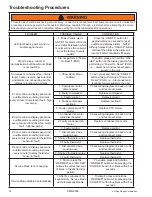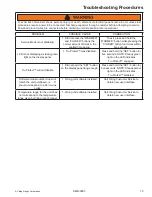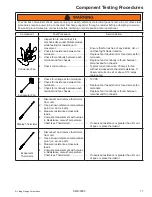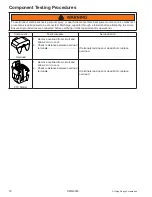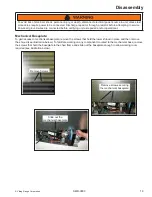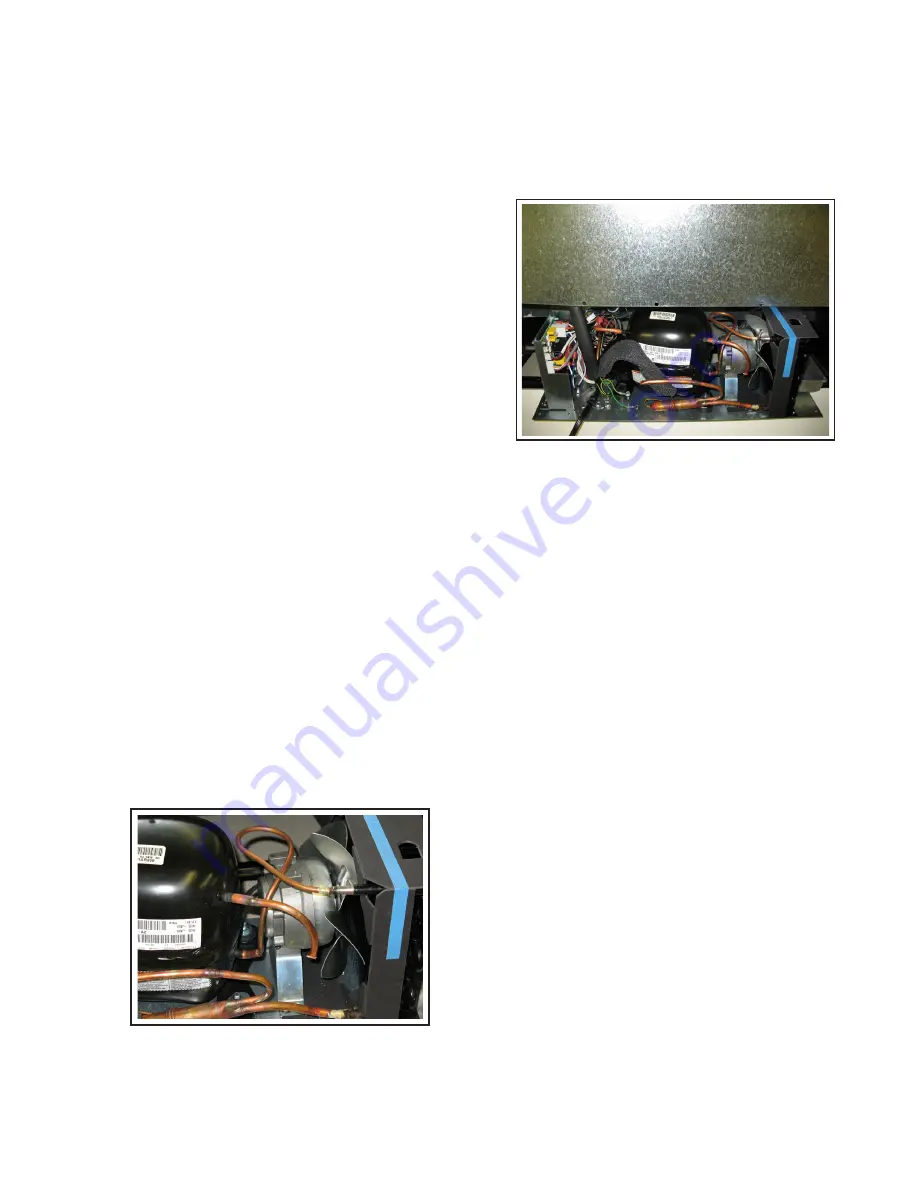
Diagnostic Information
© Viking Range Corporation
SMR-0003
7
Compressor
The compressor is the heart of the refrigeration system.
However, it relies on other parts of the system to
function. Make certain that the other parts of the system
are functioning correctly before determining that the
compressor is faulty.
The following should be observed before concluding
the compressor is faulty:
Low high side pressures, warm evaporator plate,
1.
cool condenser coil, or little or very low current draw
from the unit will indicate a faulty compressor.
Check for continuity between the compressor
2.
terminals and the shell of the compressor. If
continuity is found, the compressor is faulty and will
need to be replaced.
Check for resistance between all compressor
3.
terminals. The resistance will vary from terminal
to terminal and from compressor to compressor
due to age and use. If no resistance is found, the
compressor is faulty and will need to be replaced.
Re-charging
Re-charging of the unit should be done only after
diagnosing and repairing the system. Be sure to flush
the system with dry nitrogen gas and evacuate to 50
microns before re-charging.
The method for re-charging the unit is by weight using
vapor refrigerant. Using manifold gauge set-up, hook up
charge hoses to the access valve on the compressor’s
process tube. If any access valve is attached to the high
side process tube, remove it and then seal the tube by
brazing before charging. Charge the unit to specified
amount (see Unit Specifications for charge specifications
per model).
After re-charging the system, check pressures
(See Pressure and Temperature) for corresponding
temperatures and pressures. If pressures are incorrect,
check the sealed system, recover the charge, repair,
evacuate, and then re-charge.
It is normal to have some condensation or slight frost on
the suction line. Typically this will occur towards the end
of a run cycle. If the frost continues down the suction
line to the compressor, the system is overcharged. It
is important that the insulation remains on the suction
line and the capillary tube together after any repair and
that it is sealed on both ends. Be sure to replace the
refrigeration putty in the hole of the foam where the
refrigerant lines go through the back of the unit. Spread
the putty out evenly filling in the cracks to prevent air
from leaking in and out.
Condenser
The condenser is a steel tube serpentine with copper
alloy fins that removes heat from hot, high pressure
vapor from the compressor. The most common trouble is
lack of airflow from either a restricted intake or exhaust
opening in the front of the unit. Lint, dust, hair, and
dirt build-up needs to be removed from the condenser
periodically to allow the unit to perform properly.

